Potential active compounds and mechanisms of Shen-Qi-Yi-Chang granule for the treatment of colorectal cancer:an analysis of network pharmacology and molecular docking
Jia-Lin Gu,Jia-Lin Yu,Zi-Wei Song,Guo-Li Wei,Yi Ji,Ling-Chang Li,Can-Hong Hu,Jie-Ge Huo*
Abstract—Background:In recent years,herbal formulations have assumed an influential part in preventing and treating tumors.Shenqi Yichang granules(SQYCG)have proven effective in the adjuvant treatment of colorectal cancer (CRC),but their mechanism has not been elucidated.This study aimed to explore the potential active compounds and mechanisms of SQYCG in the treatment of CRC using network pharmacology and molecular docking.Methods:The active compounds and targets of SQYCG and the CRC genes were found using the Traditional Chinese Medicine Systems Pharmacology,DrugBank,and DisGeNET databases.The intersected targets of disease genes and drug targets were depicted using a Venn diagram.The protein-protein interaction (PPI) network of these targets was obtained by String platform and visualized using Cytoscape.Gene Ontology (GO) and Kyoto Encyclopedia of Genes and Genomes (KEGG) enrichment analysis were carried using the DAVID database to obtain the core molecular mechanism of SQYCG in CRC treatment.Molecular docking techniques were used to validate the results.Results:A total of 63 compounds and 245 targets were obtained from the herbal prescription after the screening,of which 122 targets crossed with CRC genes.PPI showed that the core regulatory targets include MAPK1,TNF,TP53,JUN,RELA,MAPK14,and MAPK 8.The GO analysis indicated regulation of drug response,apoptotic process,response to hypoxia,angiogenesis,and response to lipopolysaccharide.KEGG pathway enrichment analysis mainly involves TNF,T cell receptor,Toll-like receptor,PI3K-Akt,and MAPK signal pathway.Conclusion:Through network pharmacology,we have demonstrated that SQYCG has multiple targets,components,and pathways in treating CRC,with anti-inflammation and inhibition of cell proliferation being critical components of its mechanism.
Keywords—Network pharmacology,Shenqi Yichang granule(SQYCG),Colorectal cancer,Molecular Docking
I.BACKGROUND
Colorectal cancer (CRC) is one of the most common malignant tumors in clinical practice,with the third-highest global incidence and mortality [1].Surgery,neoadjuvant radiotherapy,and chemotherapy are the primary modalities for CRC treatment.Although early screening and treatment technologies have improved patients’ prognosis,the mortality and recurrence rate of CRC has not been significantly reduced.In addition,treatment is limited by a paucity of drug options,a high drug resistance rate,and severe adverse reactions to chemotherapy.Traditional Chinese medicine (TCM) currently plays an increasingly important role in preventing and treating cancer and is an indispensable part of clinical management[2].Numerous studies have shown that TCM combined with surgery,radiotherapy,or chemotherapy can reduce tumor recurrence rate,prolong survival time,and improve quality of life [3].The therapeutic mechanisms of TCM may include metastasis suppression,multidrug resistance reversal,apoptosis induction,proliferation inhibition,and immune function regulation [4].
Shenqi Yichang Granule (SQYCG) is a herbal formulation consisting of Panax Ginseng C.A.Mey (ren shen),Actinidia Chinensis Planch(teng li gen),Hedysarum Multijugum Maxim(huang qi),Akebiae Frucyus (yu zhi zi),Coicis Semen (yi yi ren),and Sophorae Flavescentis Radix (ku shen),which can be used in combination with antineoplastic agents for the treatment of post-operative and advanced CRC.The efficacy of SQYCG has been verified in our previous clinical trials[5].However,its therapeutic mechanism remains unclear.
The complex synergy between individual herbs in herbal formulations can be visualized using network pharmacology via network construction,an area of intense current research interest [6-8].This approach combines multiple disciplines such as network biology and systems biology to construct multi-level relationships between drugs,targets,and diseases.In this way,the mechanism of drug action and disease pathogenesis may be explored macroscopically,and active compounds and drug targets explored microscopically [8].More importantly,network pharmacology’s systemic and holistic nature is highly consistent with the holistic concept in TCM theory,which helps explain the complex mechanisms of herbal formulations [9].Our study explores the potential molecular mechanism and active compounds of SQYCG in the treatment of CRC through network pharmacology andprovides a basis for subsequent clinical and experimental studies.Figure 1 showed the design and workflow of this study.
II.MATERIALS AND METHODS
Active compounds and targets of SQYCG
The Traditional Chinese Medicine Systems Pharmacology Database and Analysis Platform (TCMSP,http://tcmspw.com/tcmsp.php) was used to identify the active compounds and targets of SQYCG.TCMSP is a commonly used TCM screening platform,which provides professional ADME (absorption,distribution,metabolism and excretion) criteria,which can be used to reflect the dynamic process of drugs in the body[10].Each compound from herbs was screened according to the ADME criteria recommended by TCMSP and previous studies [11-13].Compounds with oral bioavailability≥30%,drug similarity ≥0.18,and Caco-2 ≥-0.4 were considered important foci for further research.
Identification of disease targets of CRC
The molecular targets for CRC were obtained from Drug-Bank (https://www.drugbank.ca/) and DisGeNET (https://ww w.disgenet.org/) using the keyword "Colorectal cancer".Drug-Bank is a comprehensive bioinformatics and cheminformatics database that combines comprehensive drug target and disease gene information[14].DisGeNET integrates a large amount of genetic and variant data related to human diseases and can be used for different research purposes,including studying the molecular basis of diseases and complications,characterizing disease-causing genes,simulating the effects of constructing drug treatments and adverse drug reactions,and validating disease candidate genes [15].We constructed a Venn diagram of the targets intersecting between SQYCG and CRC to identify the core targets with critical roles in TCM treatment.
Construction of the protein-protein interaction network
The construction of protein-protein interaction (PPI) networks is a critical step in identifying core regulatory targets.String V11.0 (https://string-db.org/),a comprehensive protein interaction data platform,was used to identify PPI networks of targets intersecting between SQYCG and CRC [16].Specific parameters used in this analysis were organism (Homo sapiens),the minimum required interaction score(highest evidence>0.90),and network display options(nodes disconnectedfrom the hidden network).
Construction of herbal-disease networks
Cytoscape V3.8.2 (https://cytoscape.org/) was used to construct the following two networks:(i) the therapeutic target network of SQYCG for CRC and (ii) herbal-compoundstargets network of SQYZG.Cytoscape is an open-source software that graphically displays networks and performs analysis,with a rich set of built-in extensions for bioinformatics analysis [17].The degree level was employed to evaluate the topological features of the constructed network [13].In addition,the Mcode clustering feature in Cytoscape was used for modularization of the treatment network better to discriminate the core functionality of SQYCG[18].
Analysis of Gene Ontology and Kyoto Gene Encyclopedia and Genome Enrichment
The Database for Annotation,Visualization,and Integrated Discovery (DAVID V6.8,https://david.ncifcrf.gov/) [19] was used to perform Gene Ontology (GO) and Kyoto Encyclopedia of Genes and Genomes (KEGG) enrichment analysis of intersected targets.DAVID is a bioinformatics database that integrates biological data and analytical tools to provide systematic and comprehensive biofunctional annotation information for large-scale genetic analysis [19].All terms were screened according to the criteria of P-value <0.05 and false discovery rate(FDR) ≤0.05.
Molecular docking of active compounds and core therapeutic targets
AutoDock V 4.2 (http://autodock.scripps.edu/) and AutoDock Vina (http://vina.scripps.edu/) [20] were used for molecular docking of active compounds from SQYCG and core targets in CRC treatment.Autodock is an open-source molecular simulation software,mainly used to perform ligandprotein molecular docking [20].A lower Vina score indicates stronger protein-compound binding ability.Finally,PyMOL(https://pymol.org/) was used to output the combination of docking and visualization[21].
III.RESULTS
Identification of the active compounds and targets of SQYCG
A total of 466 compounds from SQYCG were identified:190 inPanax Ginseng C.A.Mey,26 inActinidia Chinensis Planch,87 inHedysarum Multijugum Maxim,12 inAkebiae Frucyus,38 inCoicis Semen,and 113 inSophorae Flavescentis Radix.Sixty-three active compounds and 245 targets were identified after screening against ADME criteria.Details are shown in Supplementary Tables S1–S3
Identification of the disease targets and intersected targets
The CRC genes were searched using DrugBank and Dis-GeNET,in which a total of 26 were retrieved in DrugBank and 2612 in DisGeNET,totaling 2622 CRC-related genes after de-duplication (Table S4).In addition,the Venn diagram showed 122 targets intersecting between SQYCG and CRC,with potential therapeutic effects.(Figure 2).The details of intersected targets are shown in Table S5.
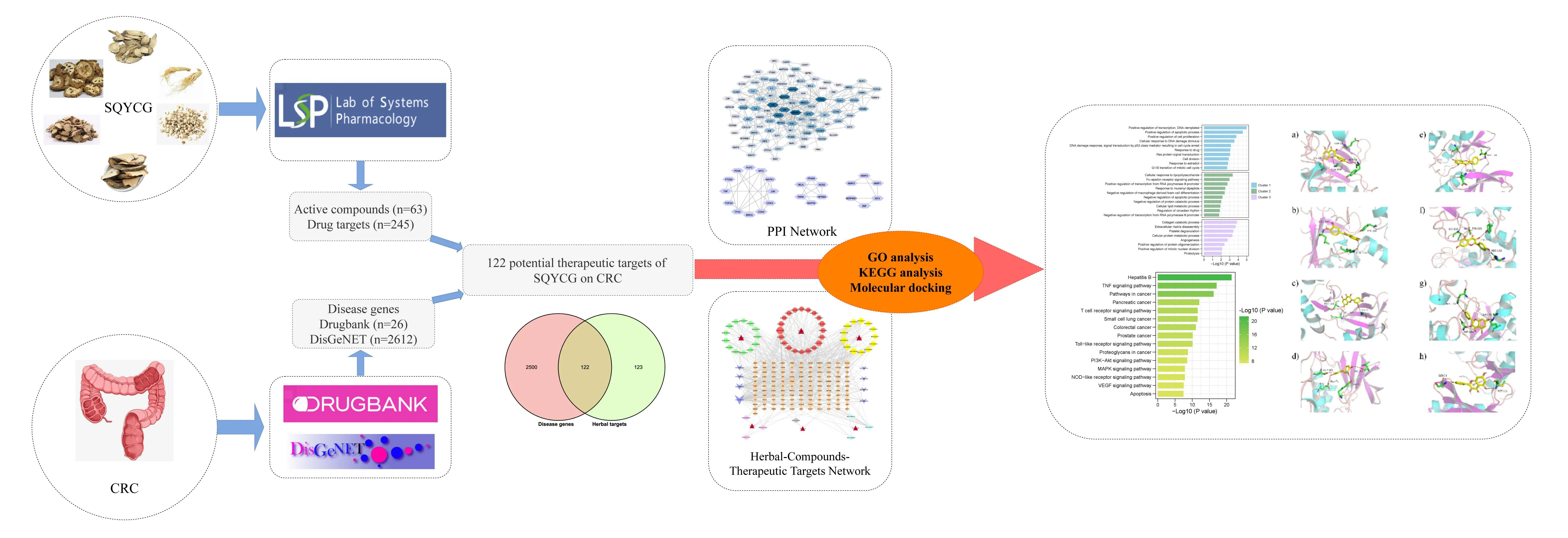
Figure 1 Design and workflow of this study
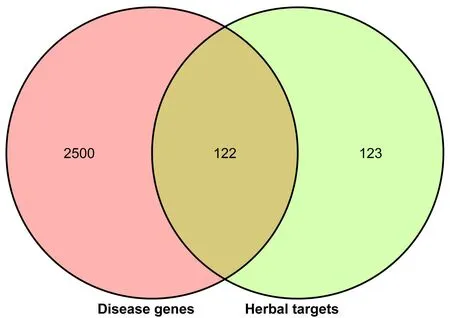
Figure 2 Venn diagram showing the number of targets common to herbal targets and disease genes.
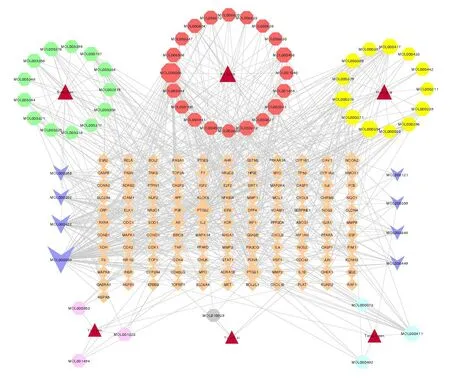
Figure 3 Herbal-Compounds-Therapeutic Targets Network of SQYCG.Red triangle nodes represent herbs,diamond nodes represent therapeutic targets,octagons represent active compounds,and purple quadrilaterals represent repeated compounds in herbs
Herbal-Compounds-Therapeutic Targets Network of SQYCG
As is shown in figure 3,a total of 189 nodes and 606 edges were identified,of which eight compounds (such as stigmasterol,beta-sitosterol,kaempferol,formononetin,and quercetin)appeared in more than two herbs,and many(such as PTGS2,TP53,MAPK1,and PTGS1) were targets of multiple compounds.The degree level analysis showed that the active compound nodes MOL000098(quercetin),MOL000006(luteolin),MOL000422 (kaempferol),and MOL000354 (isorhamnetin),and therapeutic target nodes PTGS2,PTGS1,NCOA2,RELA had a higher degree in the network,indicating that these targets may have core therapeutic effects in the CRC treatment.
SQYCG-CRC Therapeutic Targets Network
The above 122 intersected targets were uploaded to the String platform to construct the PPI network and designat as SQYCG-CRC treatment target network.A total of 93 nodes and 356 edges were constructed,in which six targets had a higher degree in the network (27 in MAPK1,26 in TP53,25 in JUN,23 in MAPK14,23 in RELA,and 23 in MAPK8).These targets with potential therapeutic effects were considered as core regulatory targets in TCM treatment (Figure 4).
GO Functional Analysis of the SQYCG-CRC Therapeutic Targets Network
As a result of the modular analysis of SQYCG-CRC intersected targets network using the Mcode cluster,the entire network was divided into three main clusters (Figure 5).These clusters were each subjected to GO biological process(GO-BP) analysis.The results showed that cluster 1 included positive regulation of apoptotic process,cellular response to DNA damage stimulus,positive regulation of cell proliferation,and G1/S transition of mitotic cell cycle.Cluster 2 included cellular response to lipopolysaccharide,and negative regulation of apoptotic process.Cluster 3 included collagen catabolic process,cellular protein metabolic process,and positive regulation(Figure 6).
KEGG Pathway Enrichment Analysis of the SQYCGCRC Therapeutic Targets Network
All treatment targets were uploaded to DAVID,and top 15 pathways were obtained,including TNF signaling pathway,T cell receptor signaling pathway,Toll-like receptor signaling pathway,PI3K-Akt signaling pathway,MAPK signaling pathway,and others(Figure 7).
Docking stimulation verification.
The two most important compounds (quercetin and kaempferol) in the“Herbal-Compounds-Therapeutic Targets”network were docked with each of the core therapeutic targets(MAPK1,RELA,MAPK14,MAPK8).The results showed Vina scores between the compounds and proteins ranging from -6.9 to -8.9,demonstrating the reliability of the network pharmacology findings(Figure 8).
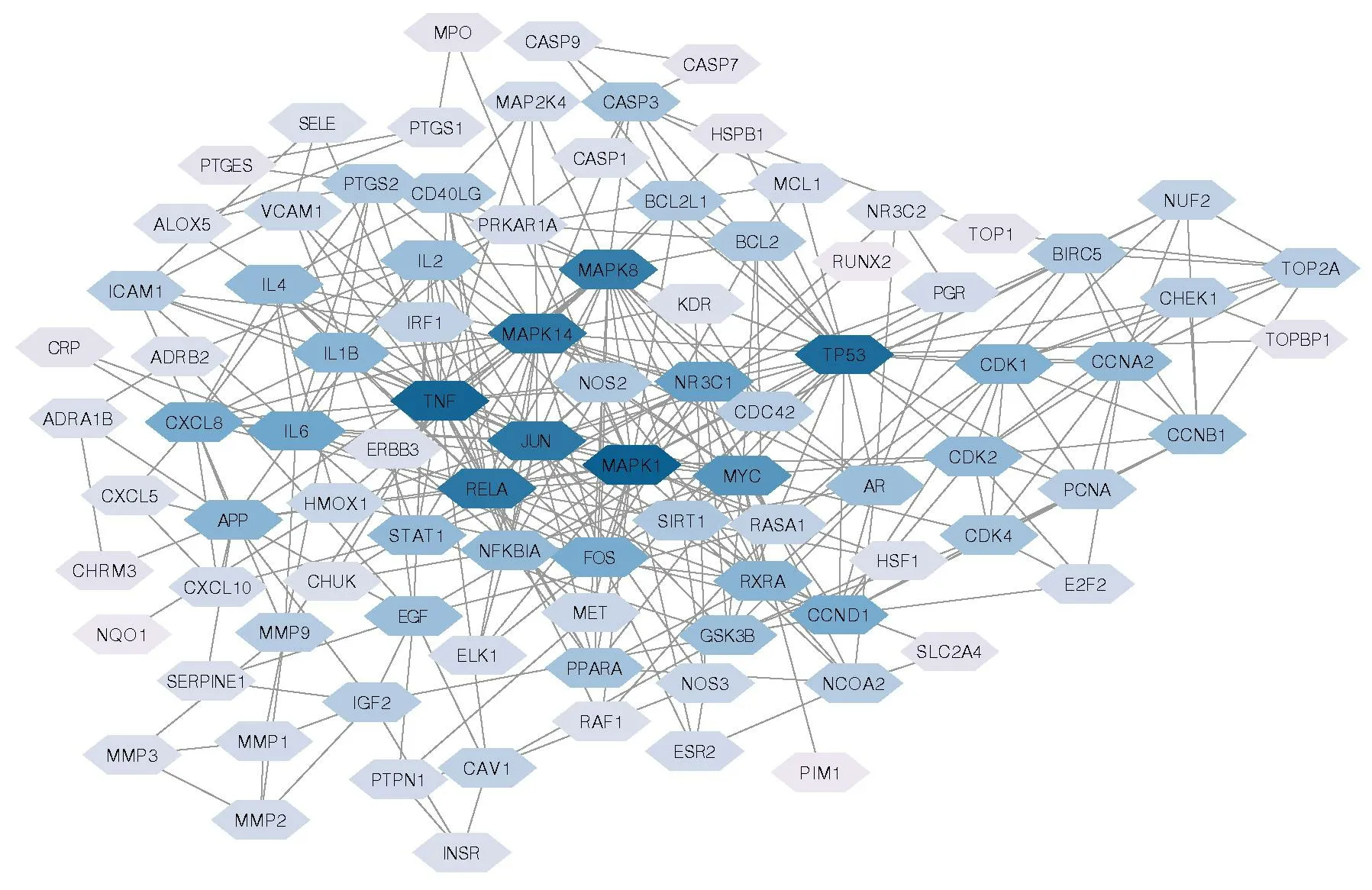
Figure 4 PPI network of SQYCG for the treatment of CRC.
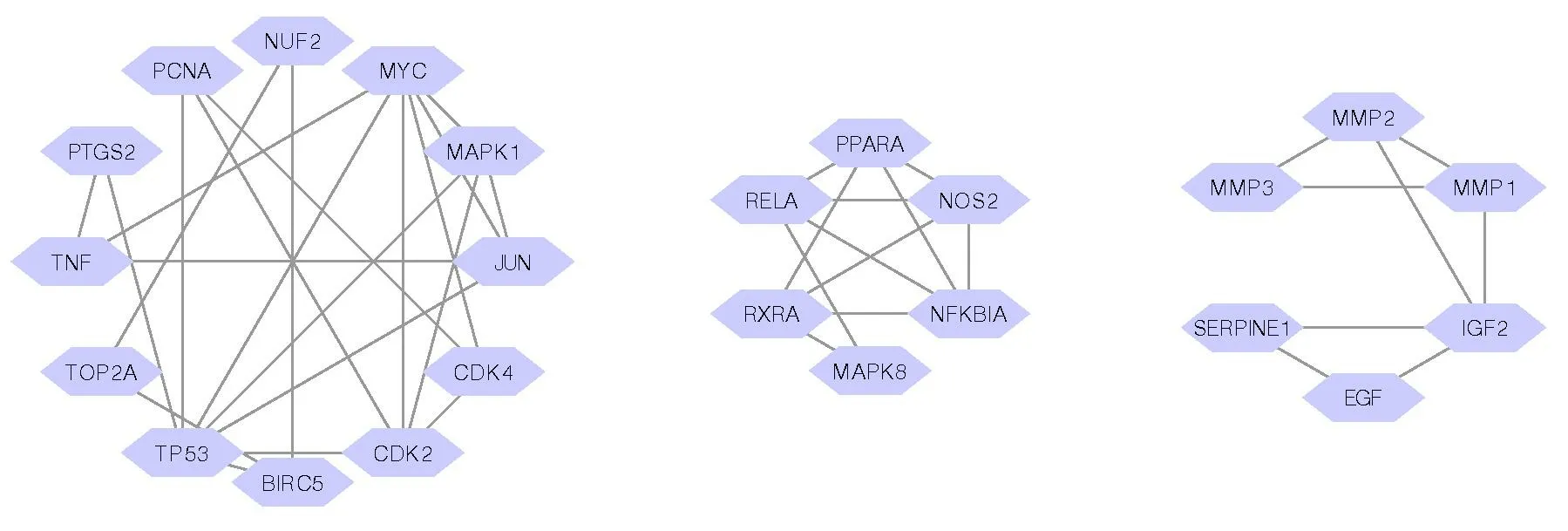
Figure 5 Mcode clustering of SQYCG treatment targets in the protein–protein interaction network.A,B,and C represent clusters 1,2,and 3,respectively.

Figure 6 GO biological process analysis of SQYCG treatment clusters
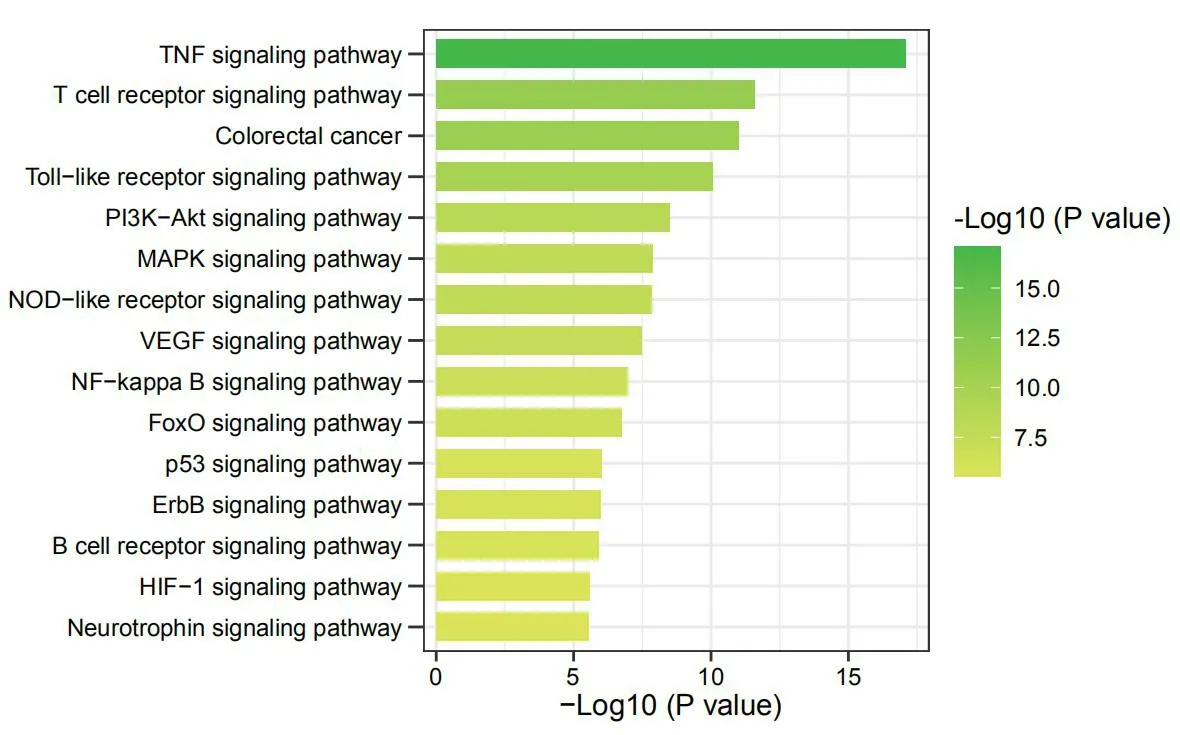
Figure 7 KEGG pathway enrichment analysis of the SQYCG-CRC Therapeutic Targets Network.
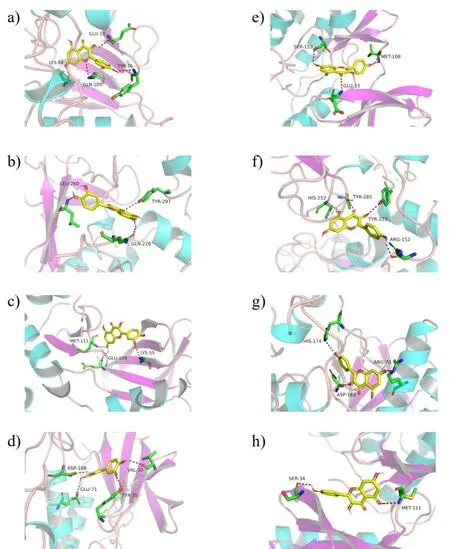
Figure 8 Molecular docking stimulation of active compounds-core targets.(a)quercetin to MAPK1;(b)quercetin to RELA;(c)quercetin to MAPK14;(d)quercetin to MAPK8;(e)kaempferol to MAPK1;(f)kaempferol to RELA;(g)kaempferol to MAPK14;(h)kaempferol to MAPK8.
IV.DISCUSSION
CRC is one of the most common digestive system malignancies,posing a severe threat to human health.Although surgery is the only means to cure CRC,postoperative recurrence,and metastasis,side effects after radiotherapy and chemotherapy,such as bone marrow suppression,anemia,neurotoxicity,and diarrhea,affect efficacy and quality of life in patients.TCM plays a multifaceted therapeutic role in the occurrence and development of colorectal cancer,with the characteristics of multi-targets,multiple pathways,a broad anti-cancer spectrum,and less toxic side effects.In the early stage of optimal supportive care,TCM combined with surgery or postoperative adjuvant chemotherapy can control tumor-related symptoms,alleviate the comorbidities of anti-tumor therapy,and assist in postoperative rehabilitation.In the middle and late stages of palliative care,TCM combined with radiotherapy and/or chemotherapy can control pain,prolong survival,and enhance patients’ immunity and quality of life.
Our previous study found that SQYCG not only induces apoptosis but also eliminates tumor cells by activating autophagy[22].Therefore,we propose that SQYCG can be used as adjuvant therapy for CRC patients.We constructed the core network and the mechanism of action of herbal formulations through network pharmacology to explore any molecular therapeutic mechanisms and pathways potentially associated with SQYCG.In a previous clinical study,we determined that SQYCG significantly improved patients’ quality of life,especially related to constipation and fatigue,without increasing the incidence of adverse effects of chemotherapy in patients with colon cancer,demonstrating the effectiveness and safety of herbal formulation [5].Therefore,it is essential to investigate the potential mechanism of SQYCG in the treatment of CRC.
Our results showed that SQYCG comprises a variety of active compounds.Quercetin is a naturally occurring small molecule flavonoid widely found in various plants,with antioxidant,anti-tumor,anti-inflammatory,and immunosuppressive effects [23].Its anti-tumor effect has been widely researched in recent years.Studies have demonstrated that it has a positive regulatory role in anti-angiogenesis,cell cycle inhibition,apoptosis promotion,and metastasis inhibition by regulating PI3K/Akt,MAPK,and Wnt/ β-catenin signaling pathways [24].Long-term dietary intake of quercetin may reduce the risk of CRC [25].One study showed that quercetin enhanced adriamycin-induced HT-29 cell cycle arrest in colon cancer cells and inhibited tumor cell growth[26].In addi-tion,quercetin has significant anti-multidrug resistance effects,reversing the multidrug resistance of colon cancer cells by downregulating the expression of SLC1A5 [27].The combination of quercetin and platinum drugs,particularly cisplatin and oxaliplatin,markedly reduces tumor cell resistance[28].In addition to anti-tumor effects,quercetin is also considered as a potential anti-inflammatory agent,which blocks the activation of STAT1 in the inflammatory response and inhibits inducible nitric oxide synthase,thereby down-regulating nitric oxide production to achieve anti-inflammatory effects[29].Han et al.proved that quercetin inhibited the migration and invasion of Caco-2 cells and reduced the production of inflammatory factors such as IL-6,TNF-α,and Cox-2,which are closely related to precancerous lesions in colon cancer [30].Luteolin,another flavonoid widely found in herbs and fruits,can be used as an anti-tumor agent in various types of human malignancies,perhaps due to its anti-inflammatory and antioxidant properties[31].In vitro research confirms that luteolin inhibitsproliferation and induces apoptosis in human colon cancer cellswith KRAS mutation[32].One study showed that luteolin increased the uptake and accumulation of oxaliplatin in cells,thereby improving the sensitivity of agents [33].The anti-cancer effects of kaempferol have been more comprehensively studied and include synergistic therapeutic effects with 5-fluorouracil through the PI3K/Akt pathway and reduced drug resistance in colon cancer cells.In addition,kaempferol provides a bidirectional regulatory effect on cancer and noncancer cells by regulating autophagy and endoplasmic reticulum stress,enhancing the survival of noncancer cells,and promoting apoptosis of cancer cells [34].Other compounds such as isorhamnetin [35],formononetin [36],and stigmasterol [37]have also been shown to have anti-tumor effects.PPI analysis revealed vital therapeutic targets,including MAPK1,T JUN,MAPK14,RELA,TP53,and MAPK8.The mitogenactivated protein kinase (MAPK) family plays an essential role in various cellular responses,including cell proliferation,differentiation,and apoptosis [38].Elevated expression of MAPK1 was detected in various tumor cells and had an independent association with CRC[39].The expression of MAPK8 is upregulated in various cancer cells and can specifically inhibit tumor or promote tumor proliferation [40].MAPK14 exerts a bidirectional regulatory effect on CRC development,inhibiting inflammation-related colorectal tumorigenesis by regulating the intestinal epithelial barrier and promoting tumor cell formation in transformed intestinal epithelial cells [41].TP53 is a highly tumor-related gene.Mutated TP53 not only loses its tumor-suppressive function but also promotes the proliferation and migration of cancer cells.One study found that TP53 genomic mutations in advanced colon cancer have essential effects in promoting malignant potential [42].
In the present study,GO functional,and KEGG pathway enrichment analyses were conducted as key approaches to elucidating the TCM treatment mechanism.The main biological processes of core targets were regulation of apoptotic process and cell proliferation,G1/S transition of the mitotic cell cycle,and cellular response to lipopolysaccharide.Most of these biological functions are related to tumor development.KEGG pathway enrichment analysis showed that the enriched targets included TNF,T cell receptor,Toll-like receptor,PI3KAkt,and MAPK signaling pathway,primarily associated with inflammatory or cancer pathways.For example,the MAPK signaling pathway consists of Ser/Thr protein kinases that are widely expressed in cells and are involved in a range of cellular physiological activities such as growth,development,differentiation,and apoptosis.The aberrant or excessive activation of the MAPK signaling pathway plays an essential role in the malignant transformation and evolution of cells [43,[44].We found that these pathways intersect with the disease pathway of cancer,indicating that SQYCG is pertinent in CRC treatment.
This study had some limitations.First,the inherent incompleteness of online databases,with a time lag to information upload or update,impacts the collection of disease genes and Herbal targets.Second,although the active compounds were screened according to ADME recommendations,they were primarily confirmed in single herbal plants,which does not imply that they still play a therapeutic role in herba formulations.Therefore,in a subsequent study,we intend to perform mass spectrometry analysis to clarify the compounds in SQYCG.
V.CONCLUSION
In summary,our results suggest that SQYCG exerts a therapeutic effect on CRC by inhibiting cell proliferation and inducing apoptosis,thus providing support for the reliable efficacy of this herbal formula.In addition,we validated the key compounds and core targets using a molecular docking technique,thus providing a reference for subsequent clinical and experimental studies of SQYCG.
Supplementary Information
Table S1Compounds identified in the SQYCG formula.Table S2Active compounds identified in the SQYCG formula.TableS3.Targets of the SQYCG formula.Table S4.Targets of CRC.Table S5.Intersected targets of SQYCG and CRC.
Competing interests:
The authors declare no conflicts of interest.
Acknowledgment:
This work was supported by the National Natural Science Foundation of China(No.82004339),Project of National Clinical Research Base of Traditional Chinese Medicine in Jiangsu Province(No.JD2019SZXYB02,JD2019SZXYB0 4),Scientific research project of Jiangsu provincial health commission (No.H2019095),Jiangsu science and technology department social development-clinical frontier technology.(No.BE2019767,BRA2019100),and Jiangsu province traditional Chinese medicine leading talent training project(No.SLJ0211).
Abbreviations:
SQYCG,Shenqi Yichang granules;CRC,Colorectal cancer;PPI,Protein-protein interaction;GO,Gene ontology;KEGG,Kyoto Encyclopedia of Genes and Genomes;TCM,Traditional Chinese medicine;TCMSP,Traditional Chinese Medicine Sys-tems Pharmacology Database and Analysis Platform;ADME,Absorption,distribution,metabolism and excretion;DAVID,Database for Annotation,Visualization and Integrated Discovery;GO-BP,GO biological process;MAPK,Mitogenactivated protein kinase.
Authors’contributions:
Methodology:Jiege Huo and Canhong Hu.Visualization:Lingchang Li.Project administration:Yi Ji.Software:Guoli Wei.Supervision:Ziwei Song.Writing– original draft:Jialin Gu.Writing–review &editing:Jialin Yu.The authors read and approved the final manuscript.
Citation:
Gu GL,Yu JL,Song ZW,et al.Potential active compounds and mechanisms of Shen-Qi-Yi-Chang granule for the treatment of colorectal cancer:an analysis of network pharmacology and molecular docking.Drug Comb Ther.2021;3(3):13.doi:10.53388/DCT202108053.
Executive editor:Na Liu
Submitted:01 June 2021,Accepted:15 July 2021,On-line:21 July 2021.
©2021 By Authors.Published by TMR Publishing Group Limited.This is an open access article under the CC-BY license.(http://creativecommons.org/licenses/BY/4.0/).
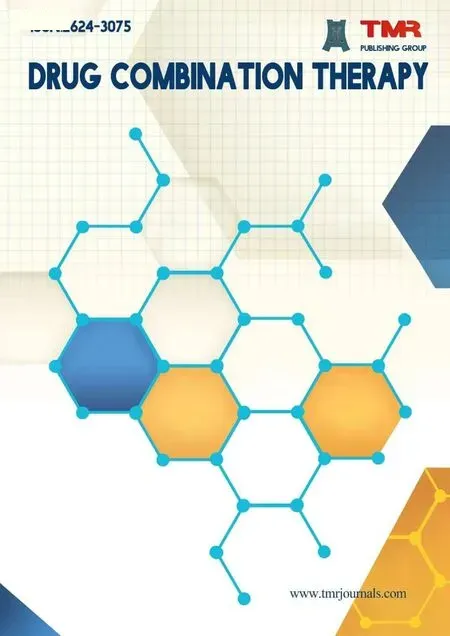 Drug Combination Therapy2021年3期
Drug Combination Therapy2021年3期
- Drug Combination Therapy的其它文章
- Treatment of irritable bowel syndrome with multi-herbal formula:A case report
- The treatment effects of Kaixin Powder on depression through heart-spleen axis
- Exploring the prescription in rules and mechanism for cerebral infarction based on data mining and Network Pharmacology
- Progress of traditional Chinese Medicine on ADHD Treatment Based on Syndrome Differentiation
